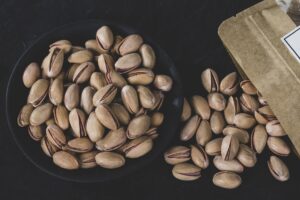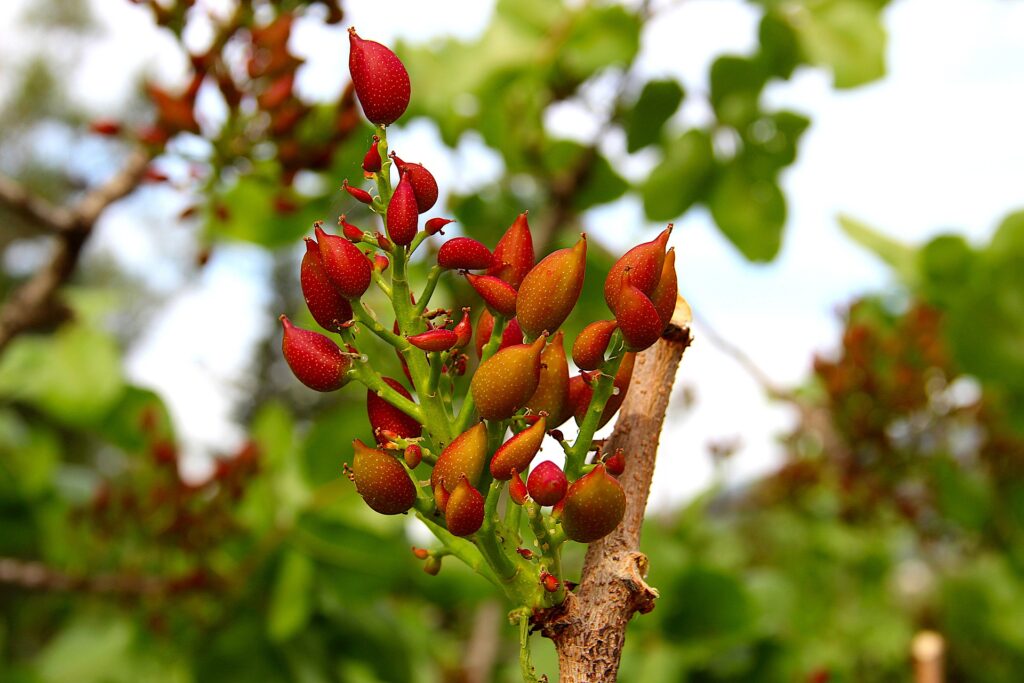Yes, it’s possible to grow a pistachio tree indoors!
While pistachio trees are typically grown in large orchards under specific climate conditions, with the right care and environment, you can cultivate a pistachio tree in your home. In this guide, we’ll explore how to successfully grow an indoor pistachio tree, including the necessary conditions, care tips, and challenges to expect.

Choosing the Right Pistachio Tree Variety
When it comes to growing pistachios indoors, selecting the right variety is crucial. The most common pistachio species for commercial production is Pistacia vera, which thrives in dry, sunny climates. If you want to try growing indoors, start with a dwarf variety or a pistachio tree that’s grafted onto a smaller rootstock. These varieties are better suited for indoor growth and can be more easily managed in pots.
Keep in mind that pistachio trees are dioecious, meaning you’ll need both a male and female tree for pollination. If your goal is to eventually harvest pistachios, make sure to plant both types, or choose a self-pollinating variety if available.
Optimal Growing Conditions for an Indoor Pistachio Tree
Growing a pistachio tree indoors requires careful attention to light, temperature, and watering. Below are the essential conditions for success:
Light Requirements
Pistachio trees need full sunlight to thrive, requiring at least 6-8 hours of direct sunlight each day. Place your tree near a south-facing window or under a grow light to ensure it gets enough light to grow and produce leaves.
Temperature and Humidity
Pistachio trees prefer warm, dry climates, and mimicking these conditions indoors is essential. Keep your indoor pistachio tree in a location where temperatures remain between 65°F to 75°F during the day, and avoid overly humid areas. During winter dormancy, the tree will need cooler temperatures, around 45°F to 50°F.
https://pistachioexporter.com/pistachio-farm/
Potting and Soil
When growing a pistachio tree indoors, choose a large, deep pot to allow for root expansion. Pistachios prefer well-draining soil that mimics their natural environment, so use a sandy or loamy mix. Make sure the pot has drainage holes to prevent water from pooling, which could cause root rot.
Care and Maintenance for Indoor Pistachio Trees
Like any plant, an indoor pistachio tree requires regular care to stay healthy and grow strong. Here are the most important aspects of pistachio tree maintenance:
Watering
Pistachio trees are drought-tolerant and do not require frequent watering. Water the tree deeply once the top inch of soil feels dry, allowing the water to drain completely. Overwatering can lead to root rot, so it’s important to let the soil dry out between watering.
Pruning
Pruning your indoor pistachio tree helps it maintain its shape and encourages healthy growth. Remove any dead, diseased, or weak branches during the winter months while the tree is dormant. Pruning also helps control the size of the tree, especially when grown in pots.
Fertilizing
To promote healthy growth, apply a balanced fertilizer designed for fruit and nut trees during the growing season (spring and summer). Use a fertilizer that contains nitrogen, phosphorus, and potassium to ensure the tree gets all the nutrients it needs. Avoid fertilizing during the tree’s dormant period in winter.
Common Challenges When Growing Pistachio Trees Indoors
While it’s possible to grow pistachio trees indoors, there are some challenges to consider. Pistachio trees naturally grow best outdoors in hot, dry climates, and replicating these conditions indoors can be tricky.
Slow Growth
Pistachio trees are slow growers, and it may take several years before you see significant growth, especially indoors. Be patient, as indoor trees typically grow slower than outdoor varieties.
Limited Nut Production
While it’s fun to grow a pistachio tree indoors, producing nuts can be a challenge. It takes a few years for pistachio trees to mature, and indoor conditions may not be ideal for nut production. However, even without nuts, pistachio trees are beautiful, hardy plants that make a great indoor addition.
